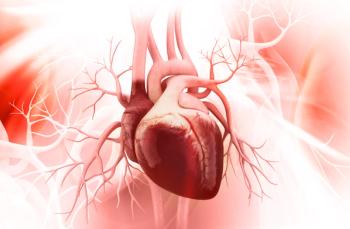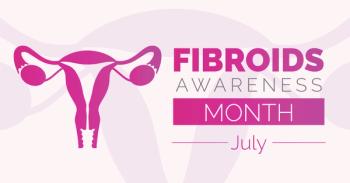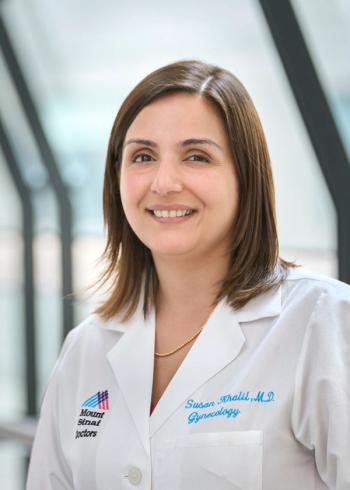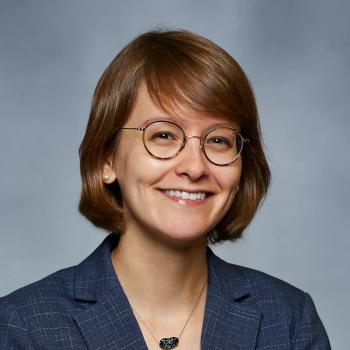
Open-ended interviews shed light on US women’s perspective of fibroid burden
A study published in Women’s Health Reports offers deeper knowledge of women’s lived experience with fibroids in their own words, and confirms the burden of the disease.
Elke Hunsche, PhD, of Global Market Access and Health Economics and Outcomes Research at Myovant Sciences GmbHIn in Basal, Switzerland and colleagues conducted the substudy. Thirty women with heavy menstrual bleeding (HMB) who participated in the phase 3, randomized, double-blind, placebo-controlled
Researchers conducted interviews via telephone (26 women/86.7%) or web-based video conferencing (4 women, 13.3%) that were scheduled between 3 and 14 days after the final week of the study visit (week 24).1 Women participating were between 35-51 years of age (mean 43 years). Over 86% of women reported attending college or higher education. Twenty-one women were Black or African American.
Hunsche and colleagues used a semi-structured format of open-ended questions followed up with targeted probes to gather data about women’s experiences with UF before and after participating in the Liberty 1 and 2 trials. Researchers asked women to describe the onset, frequency, severity, and duration of their UF symptoms and impact, and to consider and their lifetime experience with the disease.
More than 90% of women reported HMB as the most frequent symptom (n=30, 100.0%).1 The impact of open-ended questions is clear. Researchers said, “one woman characterized HMB as 'no matter how many sanitary towels you put in, when the blood comes out, it drains down to your feet because it pours.' 1 Pain was the second most commonly reported symptom (n=28, 93.3%), according to study authors. One woman described her pain as "a stabbing pain. I could be walking—just walking around a store and literally be broke down, like something literally is trying to rip out of me—or it’s a sharp, stabbing pain." the authors wrote.1 The passing of blood clots was also frequently reported (n=28, 93.3%).
In an interview, Hunsche told Contemporary OB/GYN® that the data found that UF symptoms had a negative impact on almost every aspect of women’s lives. They affected activities of daily life, work-school attendance and productivity, emotional wellbeing, sleep quality and social activities, and placed a burden on women both physically, emotionally, and financially, she said.
Hunsche explained that the most important takeaway from the research is that it “emphasizes the importance of care providers discussing with women which symptoms of uterine fibroids have a significant impact on their daily lives, so that treatments can be tailored to individual needs.”
In addition, she said that the interview approach differs from traditional patient questionnaires by giving women the chance to freely share their experiences of UF symptomatic burden and impact has on women’s daily lives. “This allows greater opportunity to identify symptoms and impacts that are perhaps discussed less frequently in the clinical setting,” she said.
For next steps to be taken, Hunsche told Contemporary OB/GYN® that “further research should be conducted in a population of women with UF not experiencing heavy menstrual bleeding, as well as in countries other than the US, to assess the burden of UF in a broader population.” She said additional research could explore the development of a short questionnaire for assessing the most bothersome symptoms and impacts of UF for regular use in clinical practice.
Hunsche said she and her colleagues have conducted a similar interview study to assess the symptomatic burden and impact of endometriosis-associated pain, the results of which will be published soon. “This study provides insights on the experience and perspectives of endometriosis – a disease reported in up to 15% of premenopausal women – as described by women in their own words,” Hunsche said.
Disclosures
Hunsche and Rakov are employed by Myovant Sciences and are shareholders of the company. McCain was an employee and a shareholder of Myovant Sciences at the time of writing. Witherspoon is employed by Endpoint Outcomes, who was compensated by Myovant Sciences to conduct this research. Scippa was an employee of Endpoint Outcomes at the time this research was conducted.
Reference
Hunsche E, Rakov V, Scippa K, Witherspoon B, McKain L. The Burden of Uterine Fibroids from the Perspective of US Women Participating in Open-Ended Interviews. Womens Health Rep (New Rochelle). 2022 Mar 4;3(1):286-296. doi: 10.1089/whr.2021.0086. PMID: 35415708; PMCID: PMC8994433.
Newsletter
Get the latest clinical updates, case studies, and expert commentary in obstetric and gynecologic care. Sign up now to stay informed.




